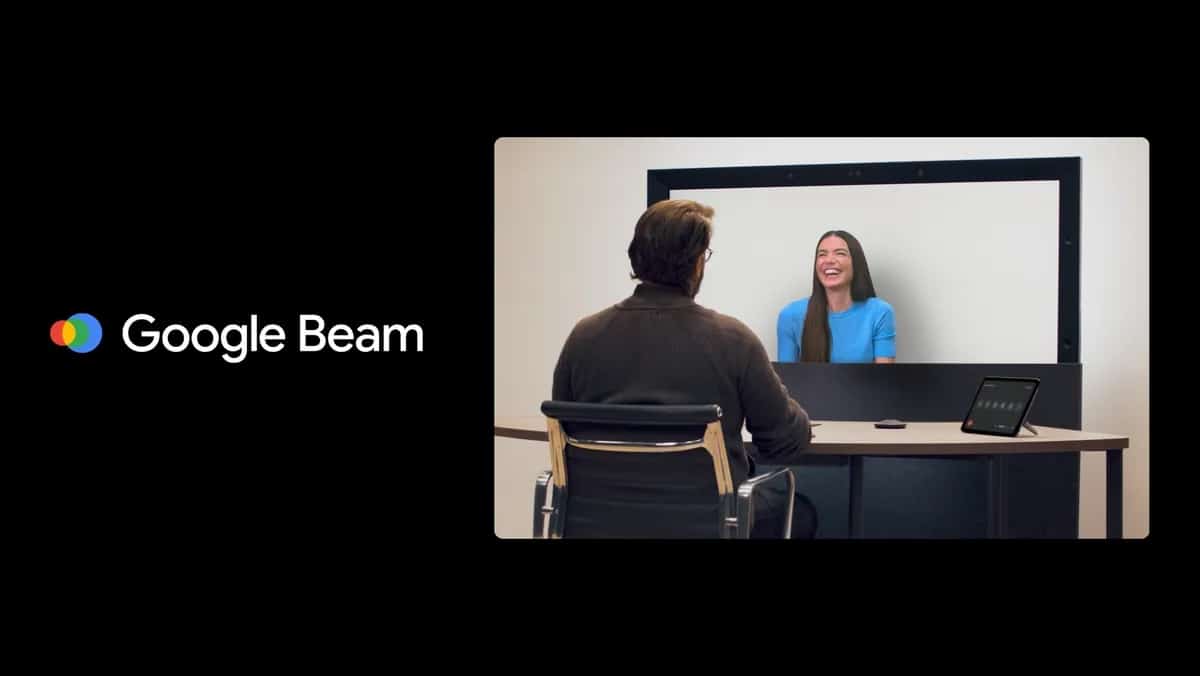Google has taken another step in the evolution of video calls with the official announcement of Google Beam, a three-dimensional communication platform based on artificial intelligence (AI) that completely transforms the experience of connecting from a distance. What began a few years ago as the ambitious Project Starline has finally materialized into a commercial product ready to reach businesses and organizations around the world.
From Research to Product: What is Google Beam?
Google Beam is the direct result of years of advanced research in volumetric video and machine learning. Its goal is to make work video calls, meetings, or even family conversations feel as natural as if people were physically in the same room, without the need for glasses, virtual reality headsets, or specialized hardware from the user.
The key to Google Beam is its AI volumetric video model, which converts conventional 2D video signals into realistic three-dimensional representations, allowing each participant to perceive depth, make authentic eye contact, and read the emotional nuances of the other person. The technology also uses special displays based on light fields to create the feeling of "real presence."
AI and Cloud for the Era of 3D Communication
Google Beam leverages the power and scalability of Google Cloud alongside Google’s expertise in AI. This not only ensures a smooth and secure experience but also integrates the platform into existing business workflows, meeting the reliability and compatibility standards required by large organizations.
Among the first practical applications is the integration of real-time voice translation, initially available in English and Spanish on Google Meet, which maintains the tone, pace, and expressiveness of the speaker. This functionality—set to expand to more languages soon—aims to eliminate language barriers in global collaboration.
Partnerships and Enterprise Deployment
Google Beam already has strategic partners such as Zoom, HP, Diversified, and AVI-SPL, and the first generation of physical devices developed by HP will be showcased in June during the InfoComm fair. The initial deployment will be in selected companies, but Google anticipates a gradual adoption in the corporate sector throughout 2025.
Major companies like Deloitte, Salesforce, Citadel, NEC, Hackensack Meridian Health, Duolingo, and Recruit have already expressed interest and begun pilot programs for the solution. From Deloitte, for example, it is highlighted that "Google Beam is not just a technological milestone but a reinvention of how we connect in the digital age."
A Future Without Barriers in Digital Communication
The focus of Google Beam is not limited to technology. Its mission is to facilitate business and personal collaboration "without borders," allowing the empathy, understanding, and trust that occurs in face-to-face communication to thrive in a remote and globalized world. The promise of "being there from anywhere" is, according to Google, increasingly becoming a tangible reality.
The platform has been designed to adapt to different scenarios: team meetings, job interviews, technical support, or even telemedicine, all with the possibility of incorporating instant translation and immersive 3D contexts.
Conclusion
Google Beam represents the next significant leap in the evolution of digital communication. By combining artificial intelligence, volumetric video, and cloud computing, the company aims to break down physical and linguistic barriers and redefine "remote presence" in the era of hybrid work and globalization. The success of its adoption will depend on both technological maturity and the social and business acceptance of new ways to "feel close" across distances.

